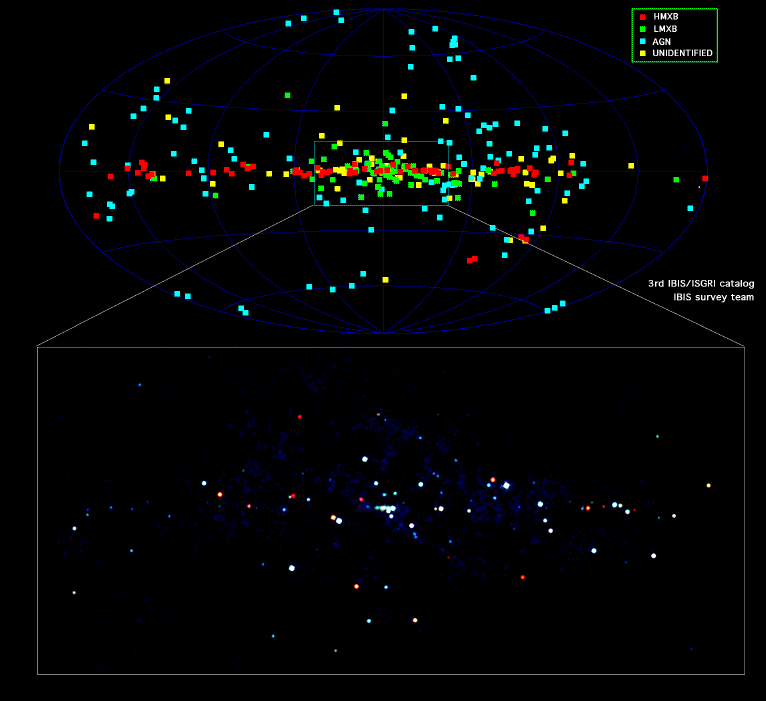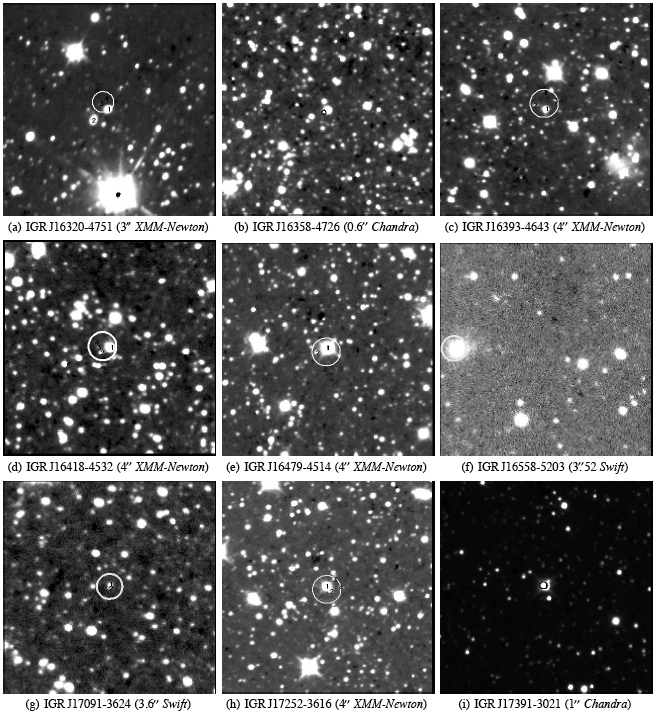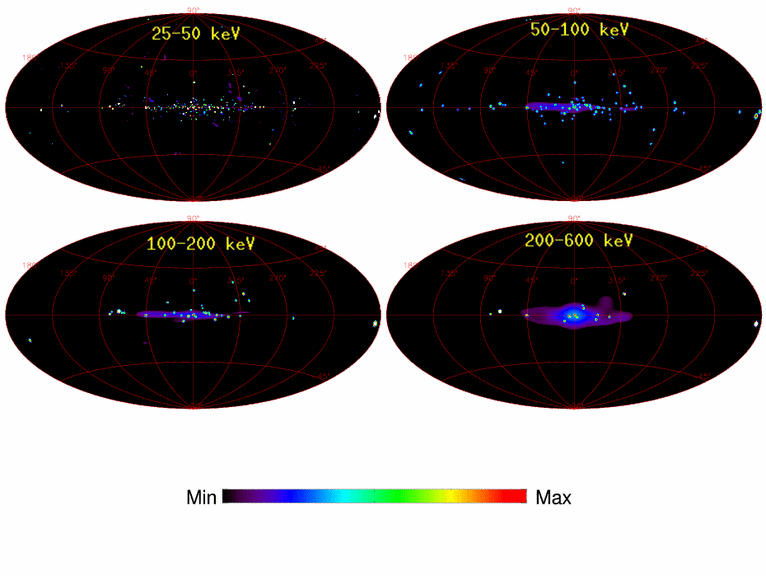Source Catalogues - INTEGRAL
Surveys and Catalogues
Exploring the gamma-ray sky with unprecedented sensitivity in this wavelength range is one of the major science goals of INTEGRAL. Dedicated teams in different groups combine all available data to search for all visible sources, identify them with known sources or counterparts at other wavelengths and classify them. The following only mentions some examples of this work.
 |
INTEGRAL/ISGRI survey cataloguesCombining a wide field of view with high spatial resolution the ISGRI instrument on-board INTEGRAL is the instrument of choice for most survey work. Based on the efforts of a large collaboration within the IBIS team, a sequence of survey catalogues have been published. The latest published version is the Third IBIS/ISGRI Soft Gamma-Ray Survey Catalogue (Bird et al. 2007) with 421 sources referenced in SIMBAD. It is based on more than 40 Ms of high-quality observations performed during the first 3.5 yr of Core Program and public IBIS/ISGRI observations. For a description of the ISINA method used in this effort, see Scaringi et al. (2008). An alternative catalogue with 403 objects has been compiled and published by Krivonos et al. (2007) and used, e.g., by Sazonov et al. (2007) to study the hard X-ray luminosity function and absorption distribution of local (z≲ 0.1) active galactic nuclei (AGN) – see also the highlights on extragalactic sources. |
  |
Multiwavelength follow-upIn a series of publications, Masetti et al. (see, e.g., Masetti et al. 2008) have published optical identifications of sources detected by INTEGRAL. This is a very large systematic study, using various telescopes on both hemispheres plus archival data from on-line sky surveys. Chaty et al. (2008) (see also Rahoui et al. 2008) studied a sample of previously unidentified sources detected with INTEGRAL for which accurate positions were available. These sources were then studied through multi-wavelength optical to NIR photometric and spectroscopic observations using the ESO NTT telescope. |
 |
Galactic Ridge emission and point source contributionBouchet et al. (2008) have processed the data accumulated with the SPI instrument over 4 years (~51 Ms) to study the morphology of the Galactic "diffuse" emission in the 20 keV to 8 MeV energy range, simultaneously deriving an all-sky census of 174 point sources observed with SPI. They confirm the earlier result by Lebrun et al. (2004), based on ISGRI data that individual sources dominate the observed emission of the Galaxy between 20 keV and 200 keV and show that the positron-annihilation emission dominates above 300 keV. Subtracting these two contributions, residual diffuse emission is detected along the Galactic Ridge, especially above ~50 keV. This is in line with the findings of Krivonos et al. (2007) who advocate a stellar origin (probably accreting magnetic white dwarf binaries) for the Galactic Ridge X-ray emission in the 17-60 keV band. The diffuse Galactic Ridge emission is explained as inverse Compton emission from cosmic ray particles in the ISM by Porter et al. (2008). |
- Removed a total of (1) style text-align:center;
- Removed a total of (1) style float:left;
- Removed a total of (1) style float:right;








































 Sign in
Sign in
 Science & Technology
Science & Technology